Japandi Bedroom: The Fusion of Serenity and Elegance
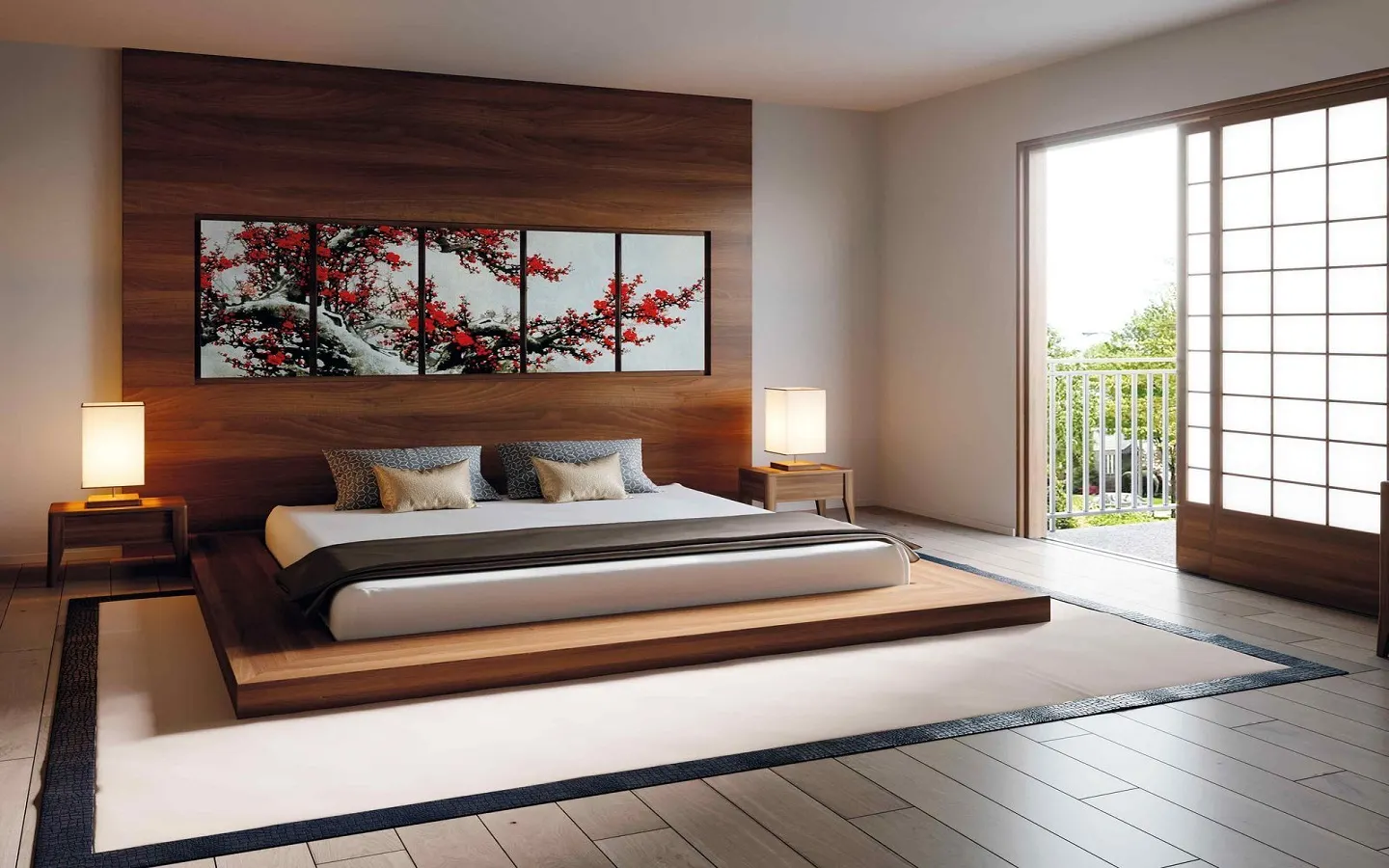
Japandi, a noble interior design style, has captivated décor and design worldwide. Merging the tranquility of Japanese minimalism and the practicality of Scandinavian design, it appeals to those yearning for peace, utility, and straightforwardness in their private quarters. The bedroom, a haven for relaxation and renewal, is a fitting environment for this aesthetic. Implementing the Japandi style within the bedroom design brings to life an ambiance that embraces tranquility, refinement, and a meticulously crafted equilibrium between various components.
Core Elements of Japandi Design
Minimalist bedroom design is a significantly popular gorgeous, practical design. The Japanese design is famous for its minimalist approach, encapsulating the concept of ‘less is more’. Its calming effect originates from Zen principles that promote balance and a deep appreciation for natural components. In contrast, its practicality and brightness distinguish Scandinavian design and a pronounced affinity with nature. When these principles are melded, they form the backbone of the Japandi style: a marriage of the East and West’s finest, fashioning a warm, welcoming, and serene space.
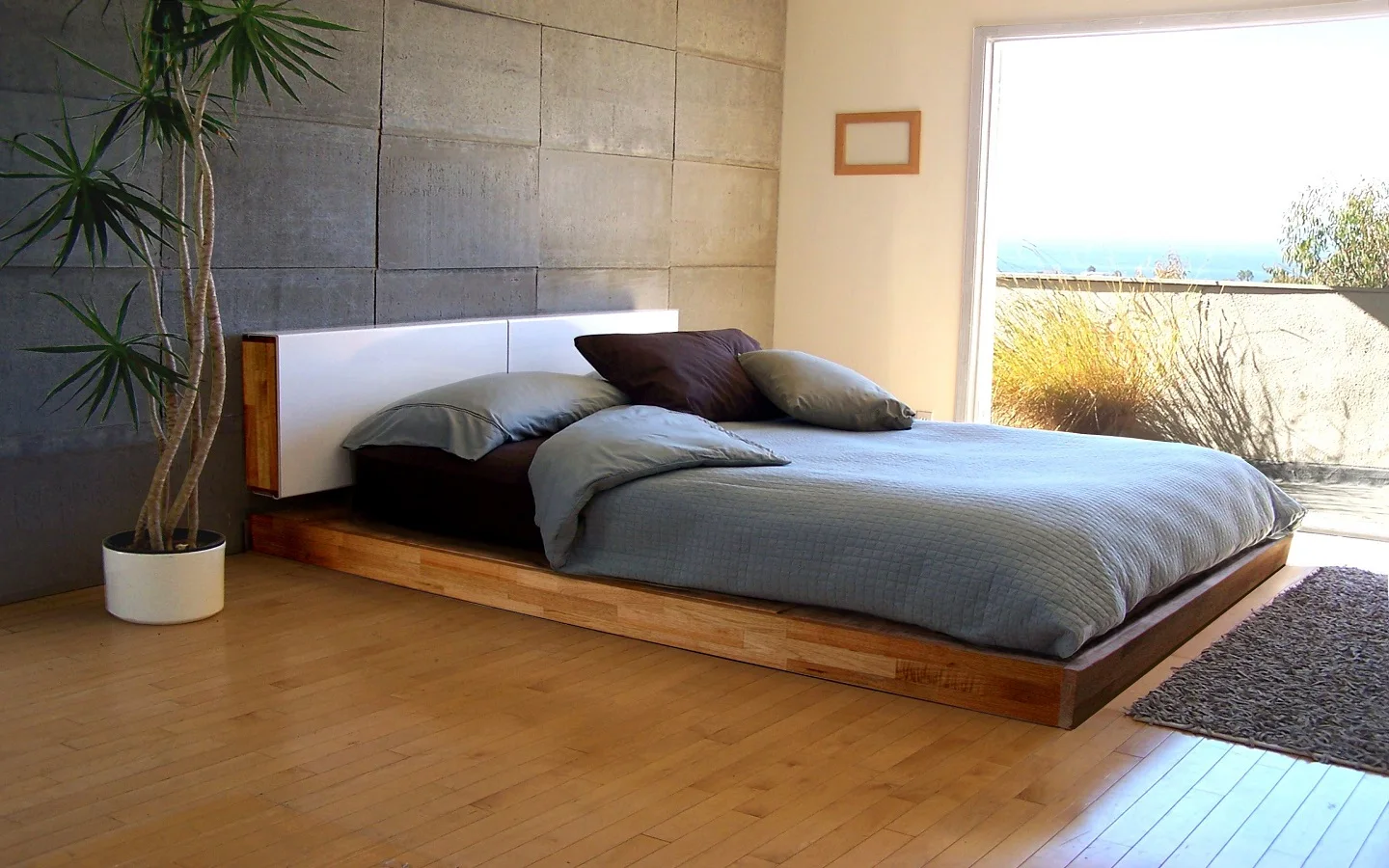
Japandi Design Color Palette: The Bedrock of Design
The primary move towards creating a Japandi-style bedroom involves choosing the right color palette. The color scheme emphasizes earthly, subdued shades like gentle beiges, greens, greys, and browns, intending to mirror the natural surroundings and foster tranquility. Splashes of color can be incorporated via accent items such as pillows or artwork, but they must remain subtle and blend well, reinforcing the style’s serene and understated sophistication.
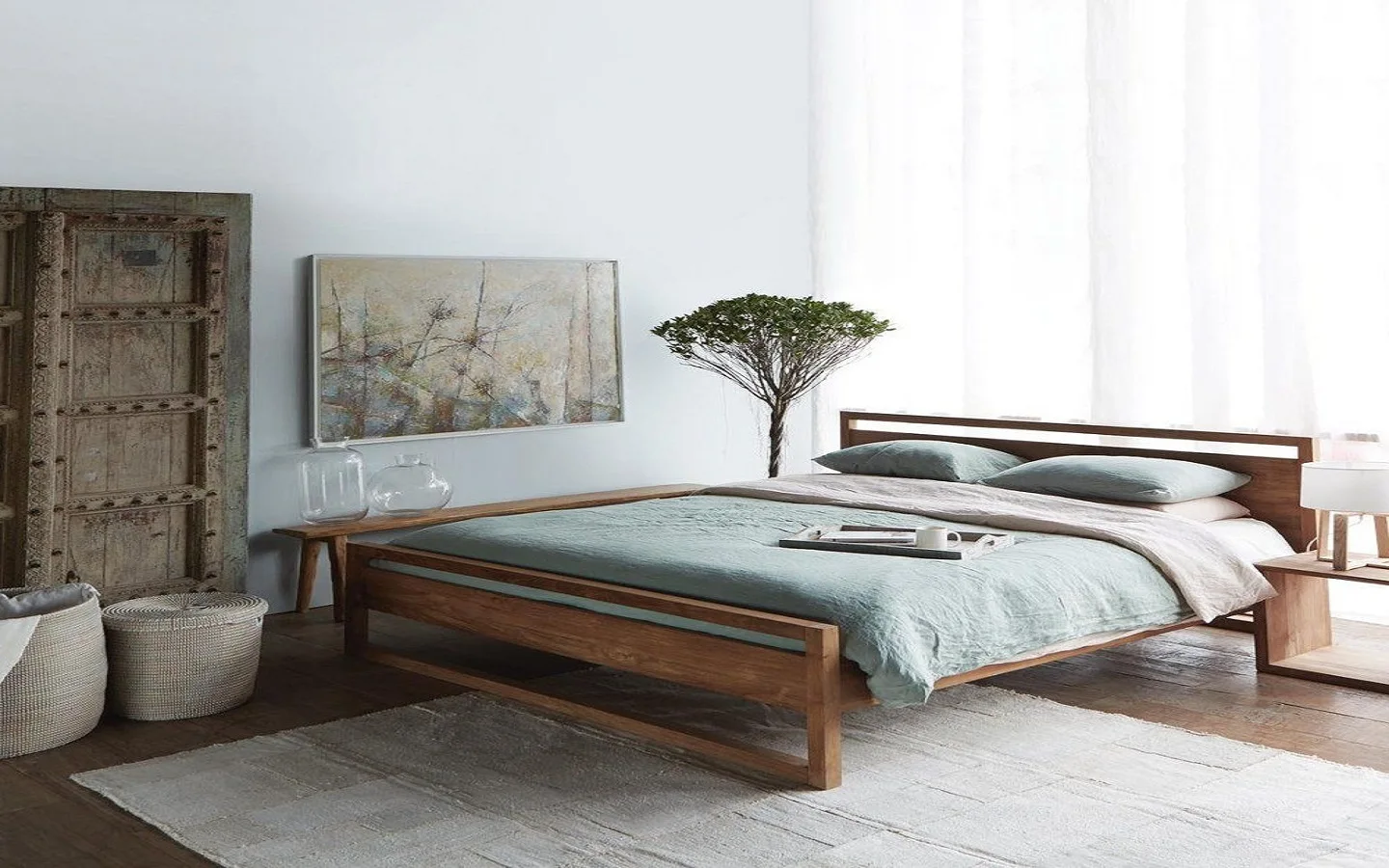
Furniture and Its Purpose in Japandi Design
The Japandi style accentuates functionality, sustainability, and minimalism in furniture selection. Simplified designs that value function and craftsmanship lay the foundation for Japandi furniture. In a bedroom, this may mean a low-lying, platform bed, a single, sleek dresser, or open shelves made from natural, ethically-sourced wood. The notion of negative space, essential in Japanese and Scandinavian designs, is important, offering ample space for mobility and promoting a tranquil ambiance.
If you are looking for a special bedroom design for couples, we have tips to help you.
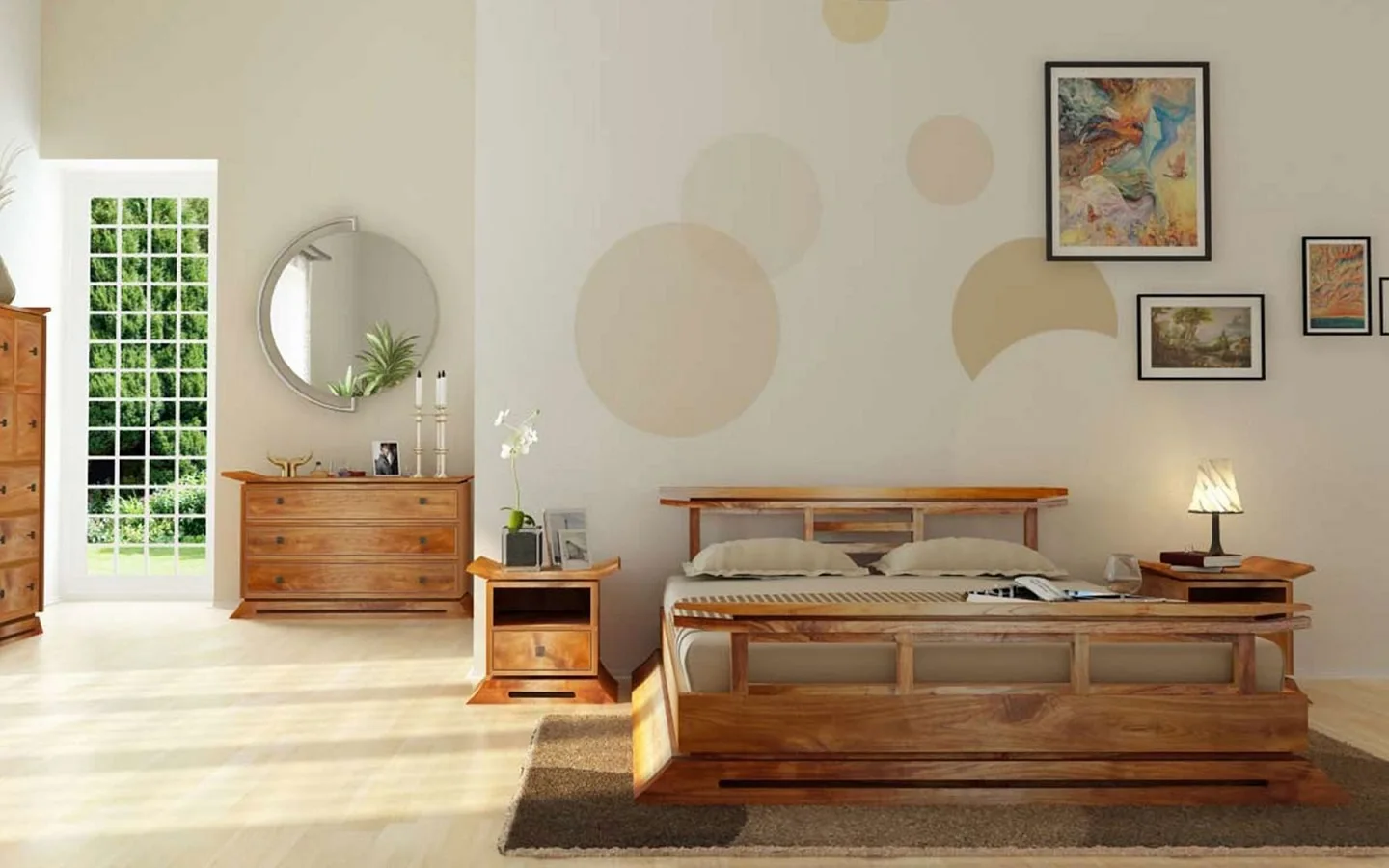
Japandi Design Textures and Materials: Achieving Balance
The interaction between various textures and materials is vital to the Japandi style. The amalgamation of organic materials, such as wood, stone, or cotton, contributes to a setting of warmth and effortless simplicity. Wood, a dominant element in Japanese and Scandinavian designs, can be incorporated into bedroom flooring, furniture, or decorative items. Textiles, too, are instrumental; linen or cotton bedding in subdued tones, woven carpets, and soft throws contribute to comfort without compromising the minimalist spirit.

Japandi Design Lighting and Accessories: Finalizing the Aesthetic
In a Japandi bedroom, lighting and accessories emphasize the room’s personality and design ethos. Natural lighting is a distinguishing feature of this design style, fostering a sense of spaciousness and unity with nature. Gentle, warm lights that foster a soothing and cozy environment are preferred for artificial lighting.
Regarding accessories, minimalism should drive the selection process. A single, well-selected artwork, a handful of well-curated books, a houseplant, or a handcrafted ceramic vase can infuse the space with charm and character without leading to visual disorder.
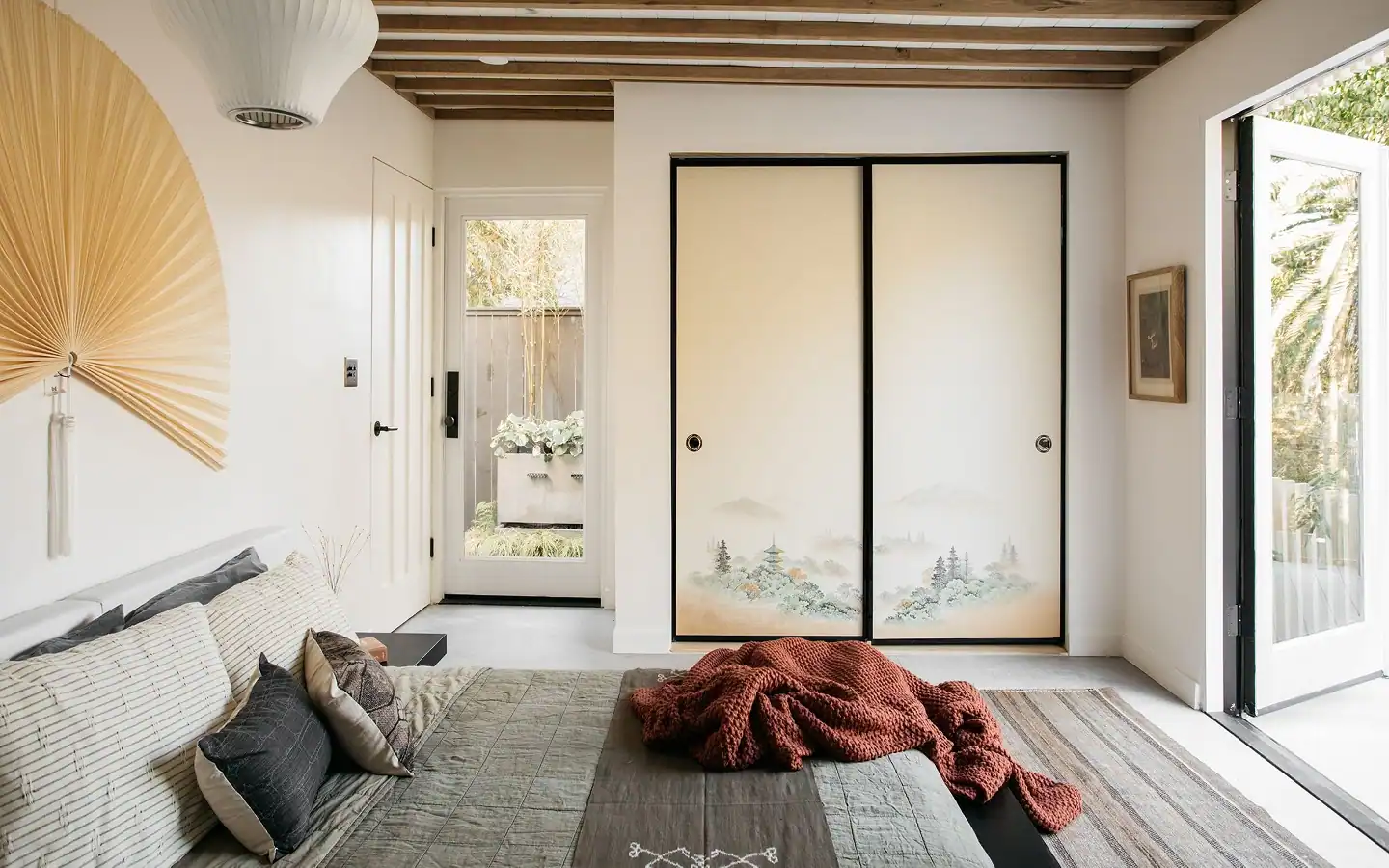
Cultivating Calmness: Embracing Wabi-Sabi
Fundamental to the Japandi aesthetic is the acceptance of Wabi-Sabi – the art of recognizing beauty in flaws. This philosophy can be interwoven into bedroom design by including natural, somewhat imperfect components. Handcrafted items, natural textures, and a conscious application of asymmetry can reinforce this aesthetic. Consider irregularly shaped ceramics, crumpled linen beddings, or repurposed wooden furniture to craft a space that is not only visually pleasing but also authentic and grounded.
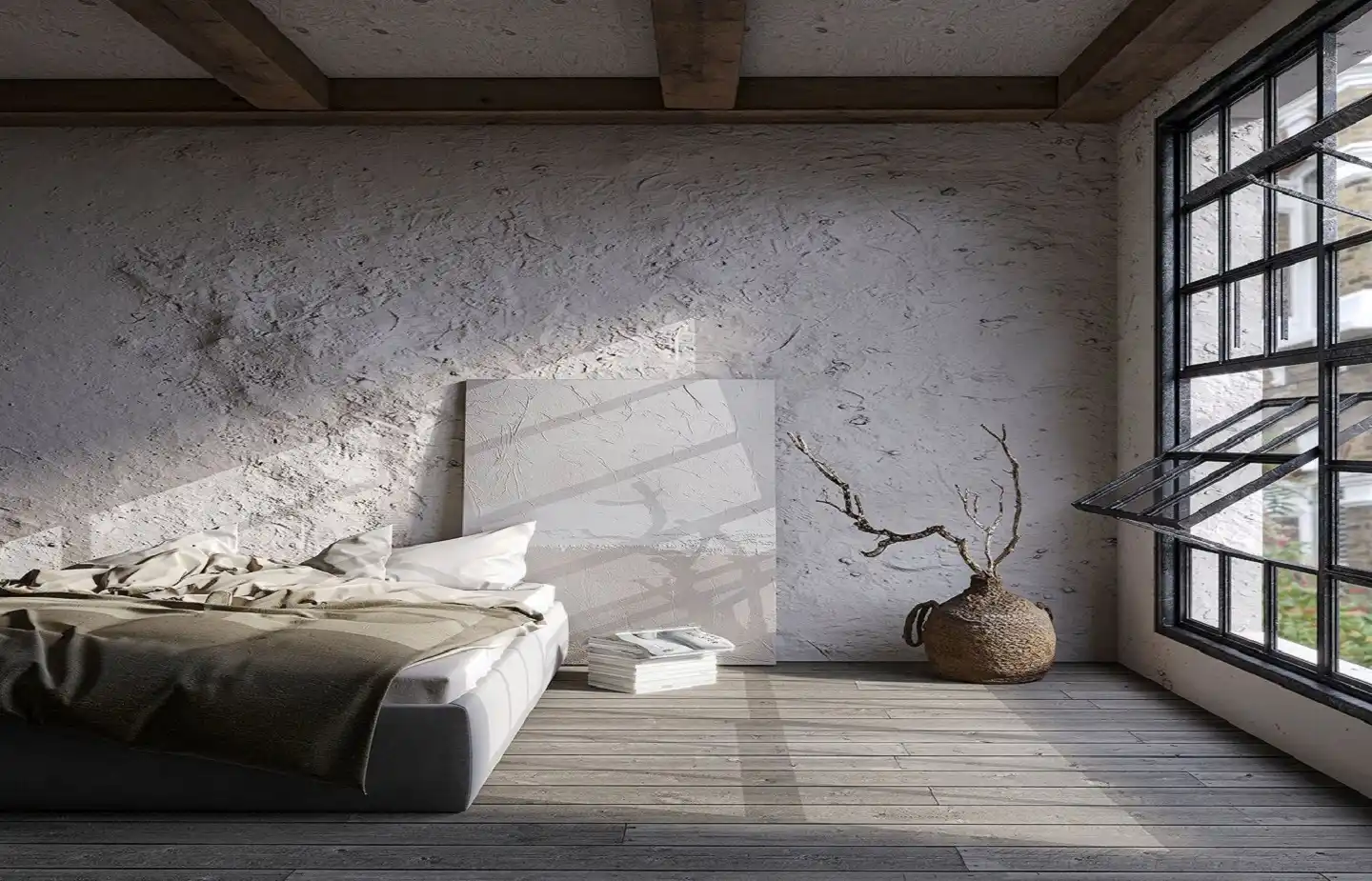
Sustainability: Advocating Environmentally-Friendly Design
Japandi style underscores sustainability, a principle that can be integrated into bedroom design in various ways. Furnishing composed of sustainable, recycled, or repurposed materials and eco-friendly bedding and textiles can enhance this ethos. Even lighting choices can express this dedication to the environment, with energy-saving LED lights or strategic utilization of natural light.
Juxtaposing Elements: Blending Light and Dark
The fusion of light and dark elements is an intriguing facet of the Japandi style. While Scandinavian design leans towards lighter wood shades, Japanese design often incorporates darker hues. Within a Japandi bedroom, achieving equilibrium between these contrasting shades can generate dynamic visual appeal. For example, a light ash wood frame against a dark wall or light bedding contrasted with dark throw pillows can effectively embody this aesthetic.
Craftsmanship and Quality in Japandi Design: Prioritizing Longevity
Japanese and Scandinavian designs both prioritize craftsmanship and durability. This principle can be manifested in the selection of bedroom furniture and accessories. Choose items that are not merely fashionable but also meticulously crafted and long-lasting. The durability of these pieces supports sustainability by minimizing the need for frequent replacements, fostering a more considerate approach toward consumption.
Japandi Design Practical Storage Solutions: Reducing Clutter
Maintaining a clutter-free environment is crucial to preserving the tranquility of a Japandi bedroom. Practical yet stylish storage solutions can assist in achieving this objective. Consider multi-functional furniture like beds with incorporated storage or minimalistic shelving units that integrate seamlessly with the room’s aesthetic. How items are stored can reflect the Japandi ethos: rather than concealing objects, contemplate displaying them in an orderly, thoughtful way, turning them into elements of the room’s décor.
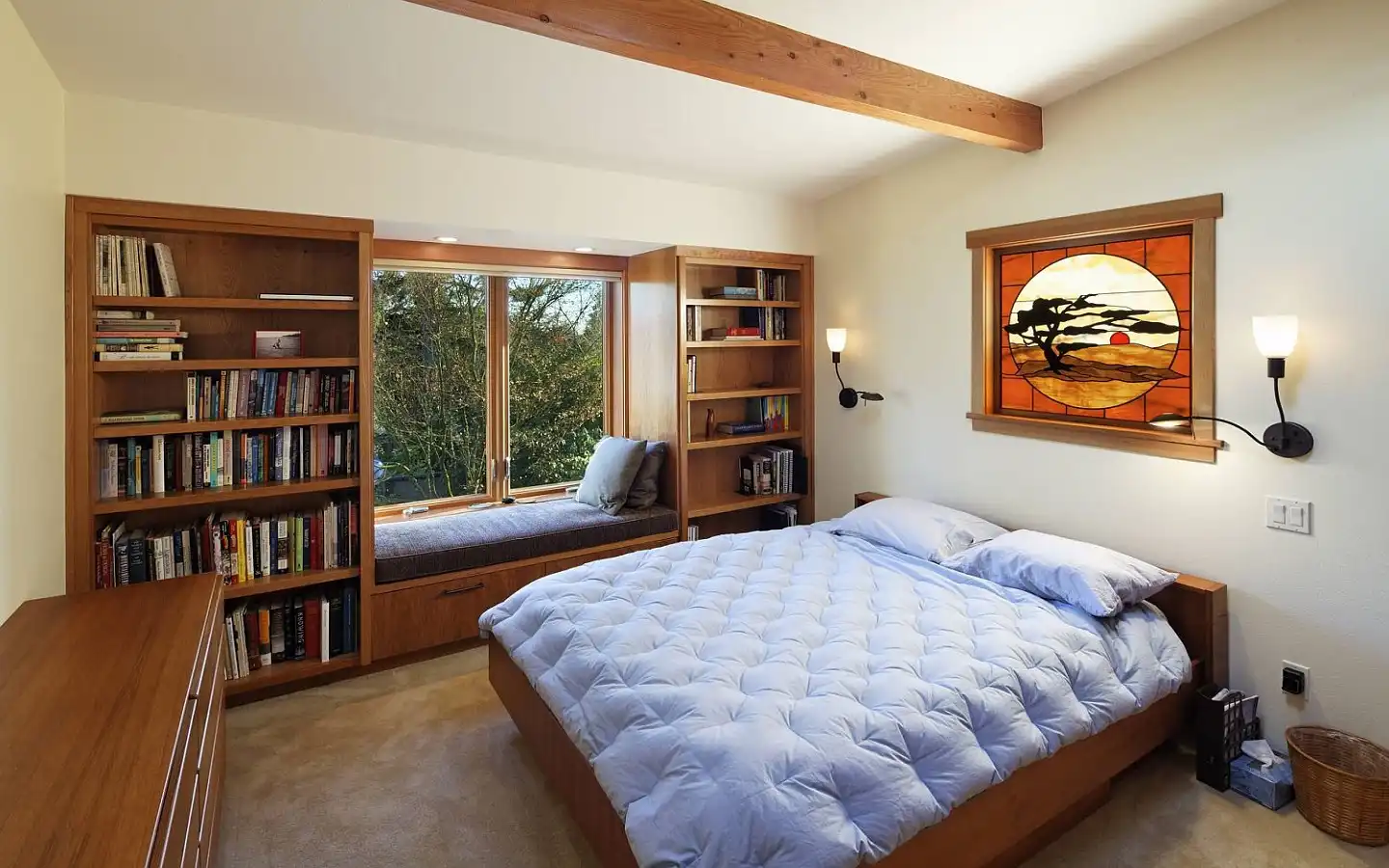
Greenery in Japandi Design: Infusing Nature Indoors
Integrating plants into a Japandi bedroom enhances the room’s aesthetics and serves a functional purpose by improving air quality and instilling calmness. Choose plants that fit the room’s minimalist aesthetic and require low maintenance. Bamboo, snake plants, or fiddle leaf figs could be excellent selections. The aim isn’t to create a forest but to interject touches of greenery that boost the room’s peacefulness and connection with nature.

Conclusion
In an increasingly fast-paced world, the Japandi bedroom provides a calming sanctuary, a refuge that emphasizes simplicity, functionality, and a profound bond with nature. By carefully curating color palettes, furniture, and accessories grounded in this design philosophy, anyone can craft a tranquil and restful Japandi bedroom that encapsulates the best Japanese and Scandinavian designs. It transcends being merely a design trend, a lifestyle that advocates serenity, reverence for nature, and conscious living.



Did you find what you were looking for?